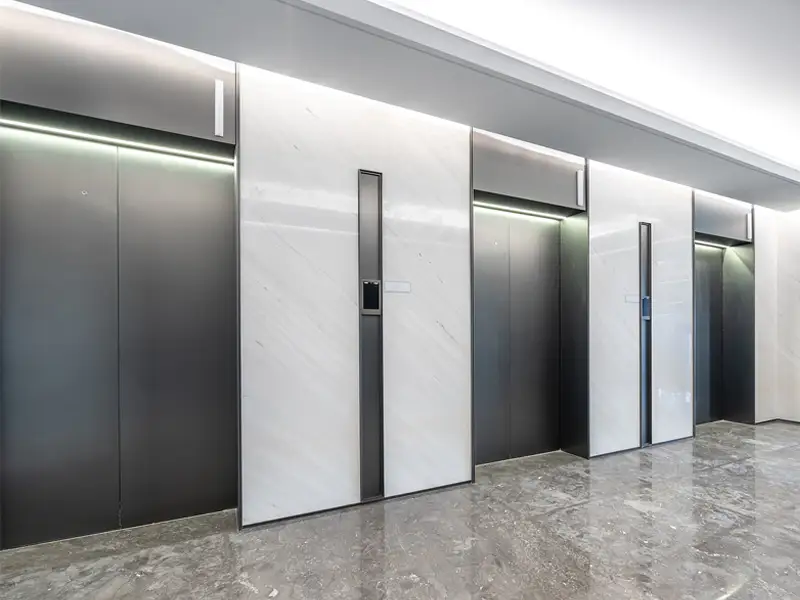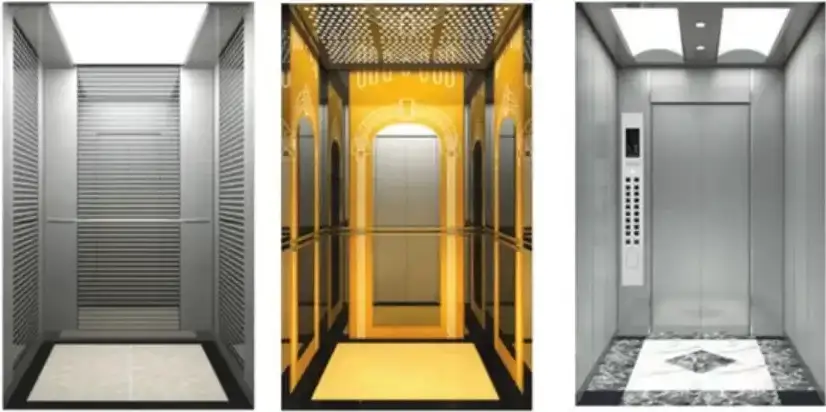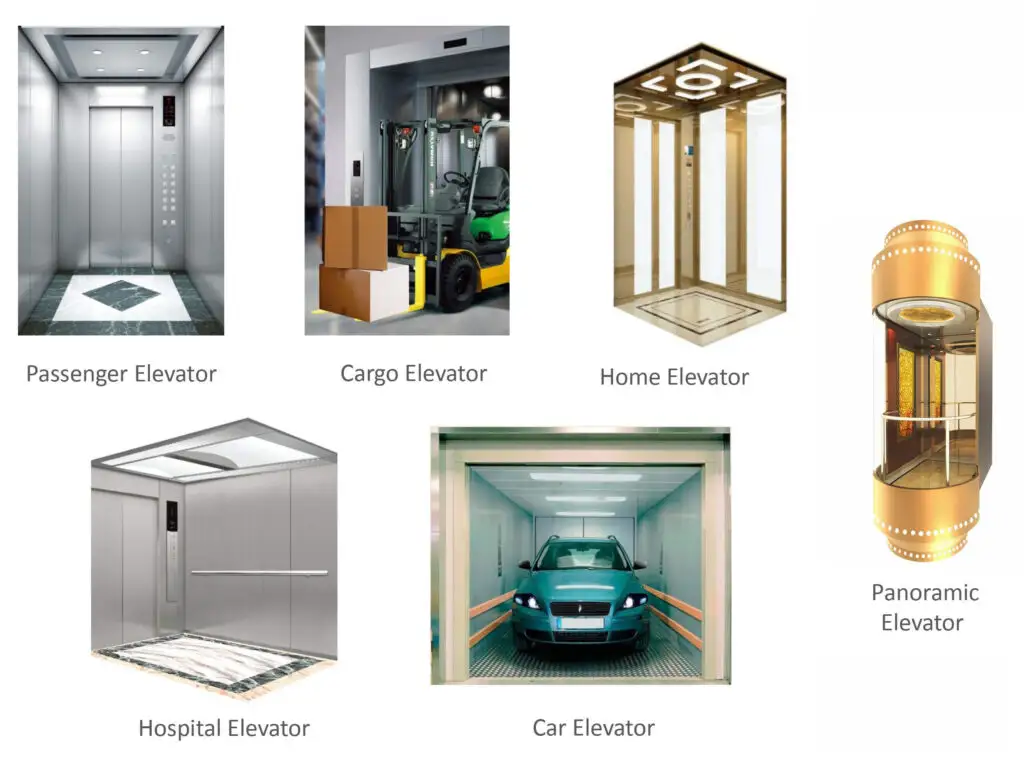In today’s bustling world, towering skyscrapers seem to touch the skies across cities worldwide. An unassuming yet indispensable innovation has transformed how passengers navigate these vertical spaces—The Passenger Elevator.
These unassuming metal boxes, often placed within buildings, are vital in building user experience. To be candid, in our fast-paced world, time is of the essence, and convenience is a priority. Passenger elevators have become a symbol of efficiency, progress, and comfort.
What are Passenger Elevators?
A passenger elevator is a transportation system designed to help passengers in a building get around the building. This type of elevator can either be the elevator helping customers or workers of a tall shopping mall move between floors of the mall. Or the elevator helping homeowners move from the top floor of their home to the down floor.
So here are the details about passenger elevators— You can find these elevators in Multi-story buildings, including residential complexes, hospitals, hotels, shopping malls, and office buildings.
The whole deal about passenger elevators is that they provide a comfortable and efficient way of traveling through buildings.
A passenger elevator is usually made up of a metal cabin moving within a vertical shaft protected by a system of rails or guide rails. The elevator also features doors on the cabin and the floors it services. The elevator doors open and close automatically for safe and easy entry and exit.

Different Types of Passenger Elevators
By Drive Type
AC Elevator
Here are the details about AC Elevators. AC elevators use an AC induction motor to move. These motors are recognized for their low maintenance status and reliability.
When an AC elevator is summoned, it generates a rotating magnetic field that communicates with the elevator’s rotor. The communication aids it to spin and move the elevator cabin.
It is also worth noting that the AC elevator operates at different speeds, making it suitable for multiple ranges of applications.
DC Elevators
DC elevators use DC, also known as Direct current motors, to propel through buildings. These motors can be found in elevators with rated speed above 2.00 meters per second.
When it comes to operations, DC motors are solid in control of speed and direction. They function by supplying constant voltage to the motor, which helps the cabin with smooth acceleration and deceleration. DC elevators are usually used in skyscrapers where a fast mode of transportation is needed to save time.
Screw Elevator
Screw elevators utilize a screw mechanism to push up and lower the elevator cabin. The plunger of the elevator is modified into a threaded screw —either in a rectangular or helical mode.
To aid these movements better, a large nut with a thrust bearing is placed on top of the cylinder —the motor drives this nut to rotate through a reducer or belt drive system. As the nut moves, it goes up and down the screw, lifting and pushing the elevator cabin through the building.
The thing about Screw elevator is that it is usually used in buildings where precise control and stability are important. It can also be a good option for low-to medium-rise buildings.
Rack and Pinion Elevator
With rack and pinion elevators, the elevator car is lifted and lowered using a rack—also known as linear gear and a pinion—which can also be called a gearwheel. The cabin is mounted with a pinion that meshes with an immobile rack.
The movement of the cabin is powered by a motor that helps the pinion to rotate, which in turn moves the car along the rack. This system is often used for unique applications and outdoor elevators. So here is the benefit of this type of elevator— It is durable, has high load-carrying capacity, and has the ability to handle inclines.

By Speed Type
Low-Speed Elevators(Less than 1.0m/s )
Low-speed elevators are found in residential buildings, low-traffic areas, and small office buildings. Due to their speed, they are relatively cost-effective, energy efficient, and the best for short distances.
Another thing about low-speed elevators is that they are best suited for accessibility purposes, like homes of the elderly or disabled individuals, where speed is not the best choice, but a slower pace guarantees safety.
Medium-Speed Elevators (1.0 to 2.5m/s)
Here are the details for this type of elevator — Medium-speed elevators are commonly installed in mid-sized office buildings, commercial spaces, and hotels.
These elevators balance energy efficiency and speed, making them the best bet for moderate traffic areas and buildings with moderate heights. These elevators provide faster vertical transportation when compared to low-speed elevators, helping passengers reduce wait time.
High-Speed Elevators ( 2.5 to 6.0m/s)
High-speed elevators are modified for high-rise buildings like skyscrapers. These elevators are modified to be very swift to enable passengers to reach their locations quickly to reduce wait time. Usually, these types of elevators are equipped with robust braking systems to handle high speeds.

Passenger Elevator Dimensions
Passenger elevator dimension varies depending on the actual design and capacity of the elevator. But in this article, we will give details on the common dimensions.
Standard Elevator:
● Width: 3-4 feet(0.91-1.22 meters)
● Depth: 4-5 feet (1.22-1.52 meters)
● Height: 7-8 feet(2.13-2.44 meters)
Larger Elevator ( for wheelchairs or stretchers):
● Width: 4-5 feet ( 1.22-1.52 meters)
● Depth: 6-7 feet (1.83-2.44 meters)
● Height: 7-8 feet(2.13-2.44 meters)
High-Capacity Elevator (for more passengers):
● Width: 5-6 feet( 1.52-1.83 meters)
● Depth: 6-8 feet (1.83-2.44 meters)
● Height: 7-8 feet (2.13-2.44 meters)
Passenger Elevator Capacity
The capacity of a passenger elevator is a critical aspect of elevator design and operation, with a specific focus on both the weight and number of passengers it can accommodate.
Weight
The weight of a passenger elevator is important. It determines the load limit of the cabin. The weight capacity of an elevator is typically measured in pounds—or kilograms and can be between 450 kilograms for smaller residential elevators and 1600 kilograms for larger commercial-purpose elevators.
Passengers
With respect to weight capacity, passenger elevators are also designed to house a certain number of passengers comfortably. To further clarify—a typical passenger elevator can be designed to house 6-22 passengers. However, it’s important to note that the capacity can vary significantly based on several factors— the size of the elevator, building code, and layout.
Passenger Elevator Speed
Passenger elevator speed is dependent on factors like building height and purpose. Elevators in low-rise buildings can travel at a speed of 100 to 200 feet per minute. At the same time, standard elevators in mid-rise structures move at 200 to 500 feet per minute. High-speed elevators, with speeds exceeding 500 feet per minute, are usually preferred for skyscrapers.
Passenger Elevator Cost
The cost of a passenger can vary based on several factors, including the type of passenger elevator, the number of floors it is intended for capacity and customization, and other bespoke options.
Installing a passenger elevator will set you back from around $9000-$30000. It depends on how many floors you are looking to work with and what type of material you want.
Passenger Elevator Installation
Planning and design
– Architects and engineers plan elevator details.
– Detailed plans consider structure and safety.
Construction and hoisting
– Elevator components are sourced or made.
– Equipment is installed in the hoistway.
– Electrical systems and safety features are tested.
Testing and certification
-Elevators undergo strict testing.
-The regulator or inspector certifies the safety.
Passenger Elevator Maintenance
Regulator inspection
– Certified technicians inspect elevators for wear, safety issues, and malfunctions.
– Checks include safety devices, cables, and the whole system condition.
Lubrication and cleaning
– Lubricate moving parts to prevent friction and wear.
– Regular cleaning will help maintain elevator cleanliness.
Preventive Maintenance
– Elevator maintenance plans prevent breakdowns by addressing potential issues.
– Technicians replace worn parts, adjust settings, and upgrade systems for better performance and safety.
Emergency Repairs
– Elevator service providers promptly address malfunctions to ensure safety.
– Emergency phone lines inside elevators help passengers seek assistance during emergencies.
Compliance with regulation
– Elevator maintenance complies with safety codes and regulations.
– Maintenance records are kept for regulatory compliance.
Modernization and upgrades
– Aging elevators may undergo Modernization for safety and comfort.
– Upgrades include new controls, energy-efficient lighting, and improved aesthetics.
Passenger Elevator Vs. Service Elevator
Passenger and service elevators each serve a different purpose within a building. Each of them is uniquely designed to cater to specific needs. Passenger elevator elevators are designed to transport people between different floors comfortably and safely.
The gist about the passenger elevator is it prioritizes user experience, beauty, and comfort. On the other hand, a service elevator —also known as a freight elevator, is designed to move goods, equipment, and heavy loads within buildings. It is usually found within industrial and commercial settings.
Service elevators can be identified by their robust construction, dimensions, and boring interiors. Service elevators prioritize functionality and durability over aesthetics.
Best Passenger Elevator Manufacturer
Dazen Elevator, a trusted passenger elevator manufacturer in China, offers a diverse range of reliable elevator solutions to suit your specific needs and budget with a strong commitment to quality, safety, and Innovations. Dazen Elevator sets the industry standard for excellence. Whether for residential, commercial, or industrial use, we have the perfect elevator for you. If you have more questions about the passenger elevators, contact us today!


